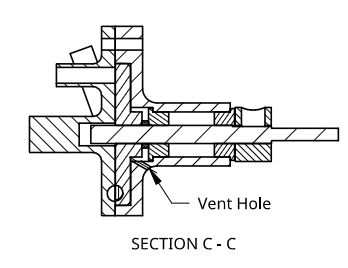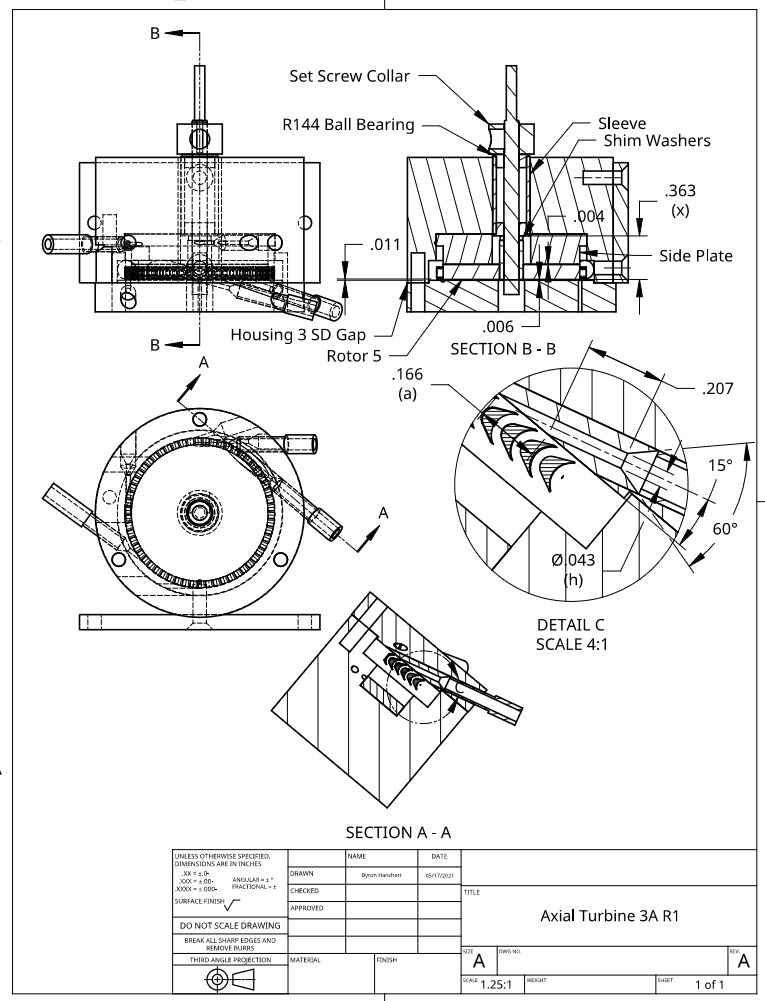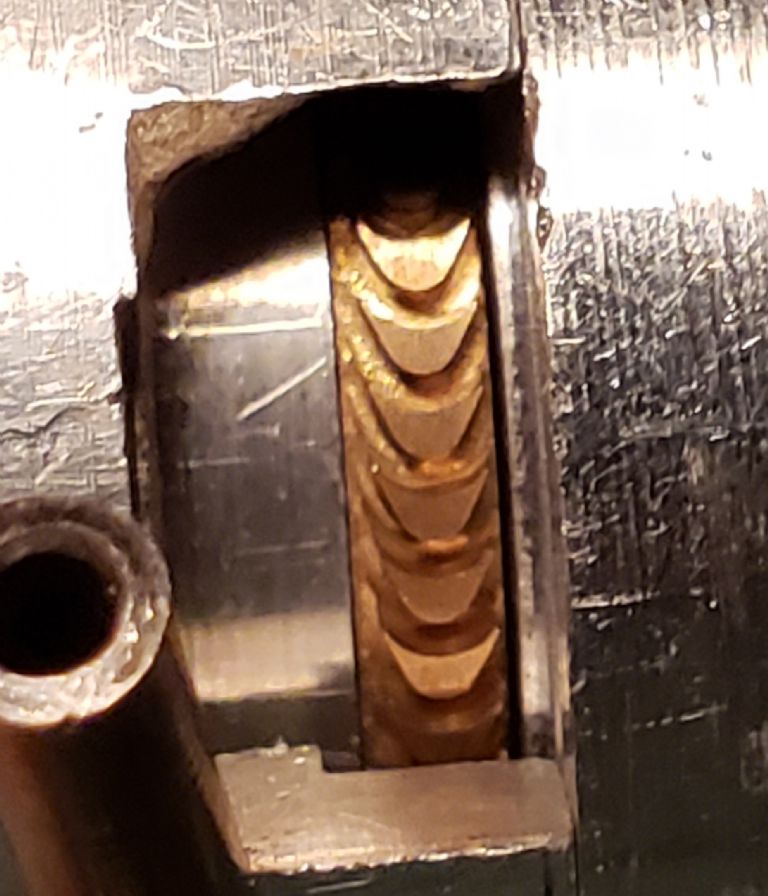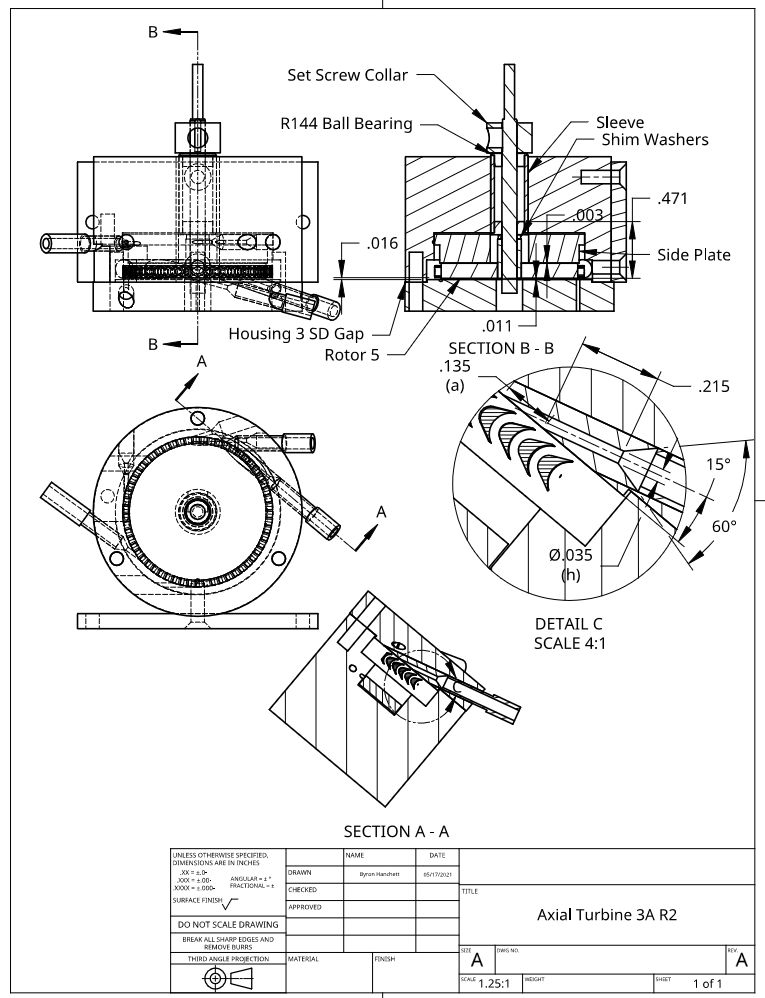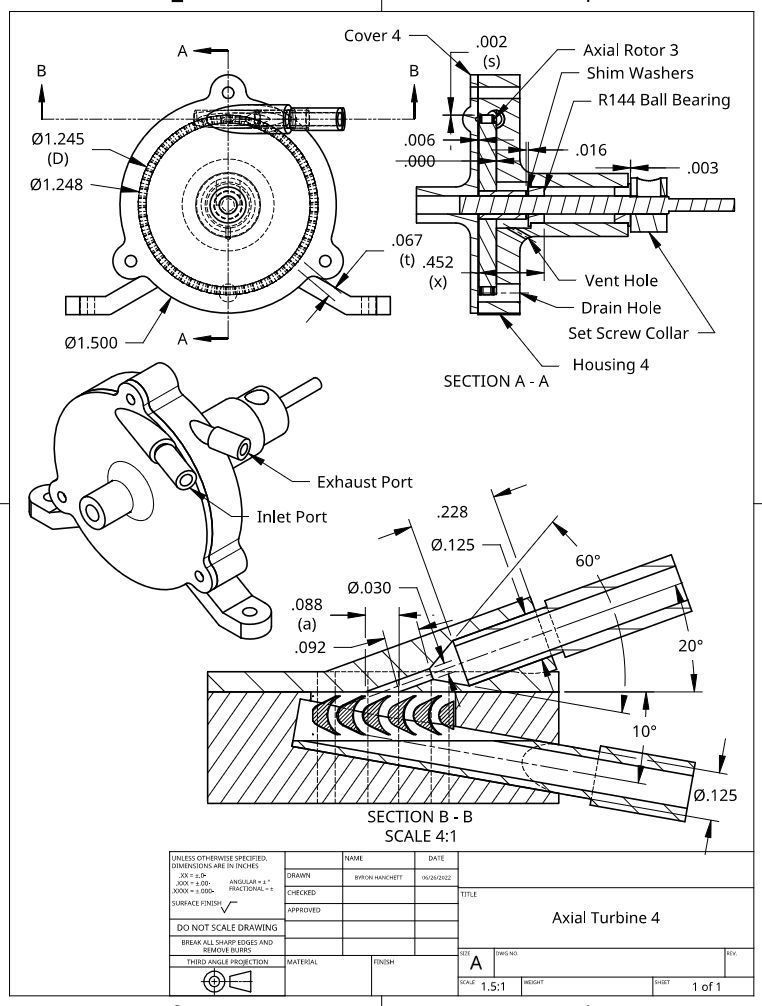My theory for why Drag Turbine 4 ran faster with the exhaust blocked than with the exhaust open is as follows. The gap between rotor faces and the housing or cover is very small (less than 0.002&rdquo . With the exhaust open, the force tilting the rotor is large enough to open the gap around the inlet and the leakage becomes very large. With the exhaust port blocked, the air must flow around the rotor, so the pressure is about equal on both sides which reduces the loads on the ball bearings and keeps the rotor from tilting enough to cause contact with the cover or housing. Eliminating any contact and reducing the bearing loads appears to add more torque than forcing the air to flow out the small vent hole reduces the torque. I tried running Drag Turbine 6B and had the same results. In the last test of Drag Turbine 6B, the rotor stopped spinning and finally the turbine would not run again with exhaust open or closed. Apparently, the forces on the dental ball bearing are too large with the drag turbines. I added a section view of Drag Turbine 6B showing the location of the vent hole.
. With the exhaust open, the force tilting the rotor is large enough to open the gap around the inlet and the leakage becomes very large. With the exhaust port blocked, the air must flow around the rotor, so the pressure is about equal on both sides which reduces the loads on the ball bearings and keeps the rotor from tilting enough to cause contact with the cover or housing. Eliminating any contact and reducing the bearing loads appears to add more torque than forcing the air to flow out the small vent hole reduces the torque. I tried running Drag Turbine 6B and had the same results. In the last test of Drag Turbine 6B, the rotor stopped spinning and finally the turbine would not run again with exhaust open or closed. Apparently, the forces on the dental ball bearing are too large with the drag turbines. I added a section view of Drag Turbine 6B showing the location of the vent hole.
I pressed the sleeve out of the drag turbine housing and tried the larger all metal ball bearings I had been using. With the rotors in the same position used in the last tests with these ball bearings, the results for Drag Turbine 4 and Drag Turbine 6B were almost identical to those shown in the table of the 10/05/2022 post.

Turbine Guy.




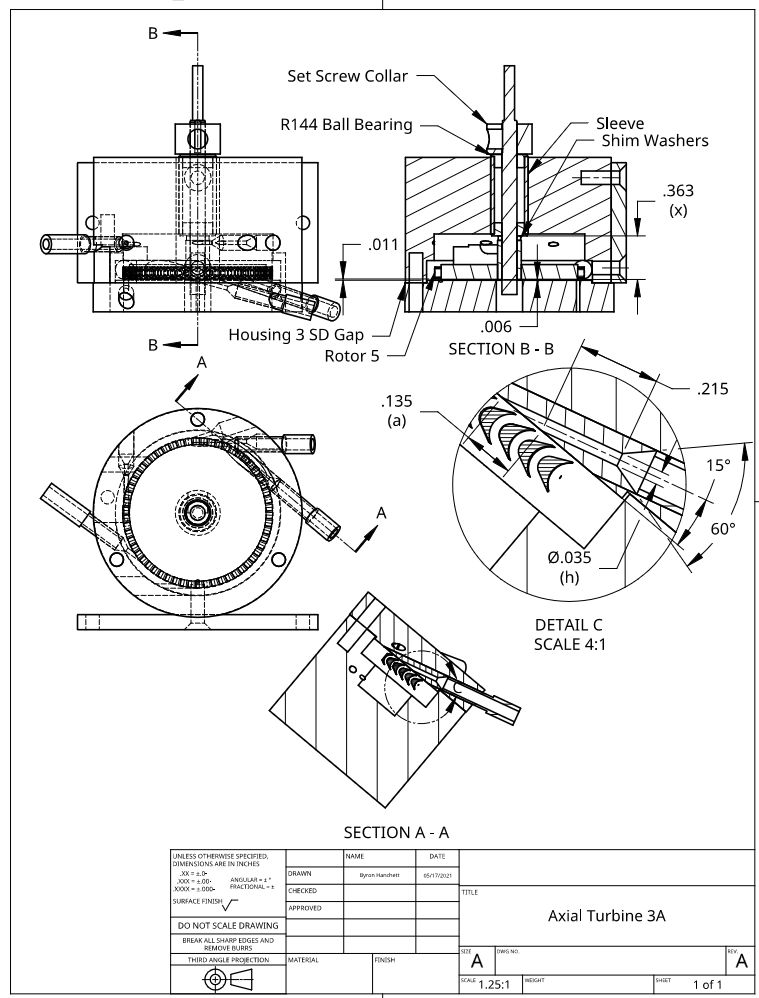

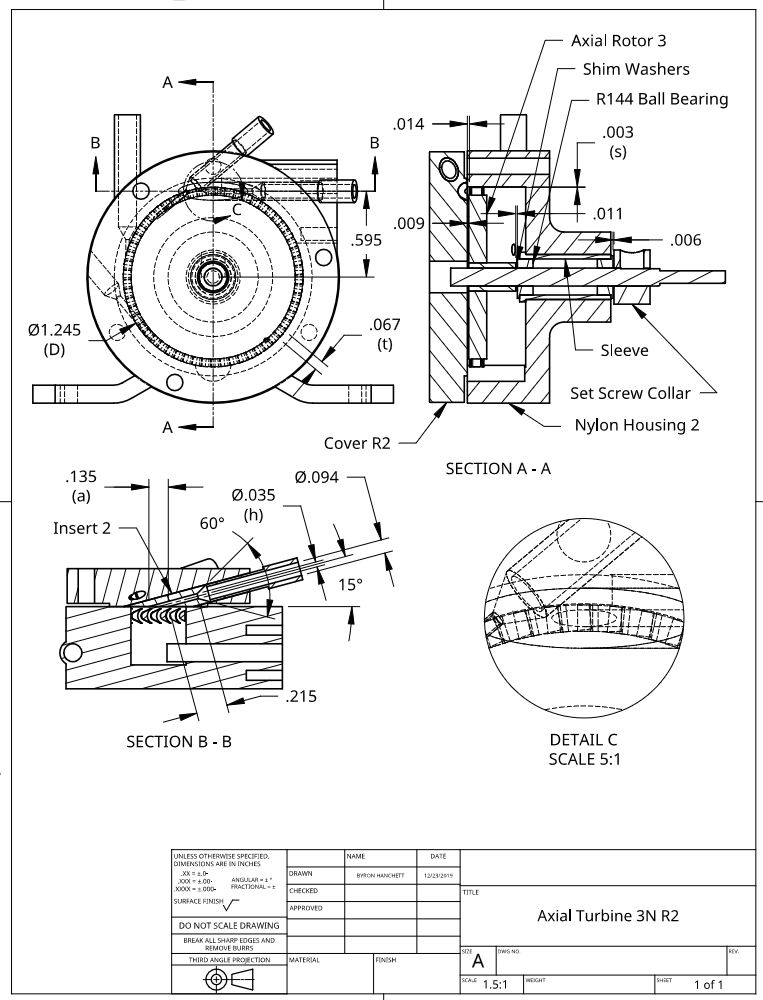
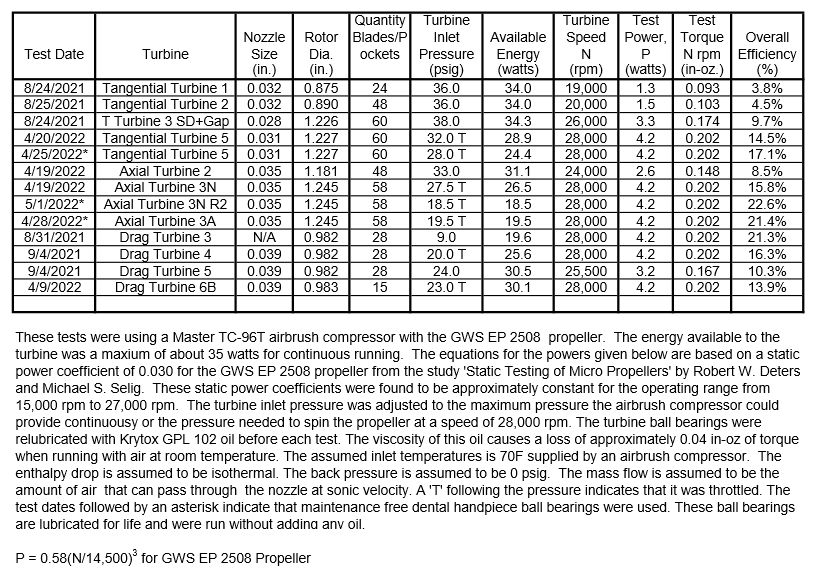
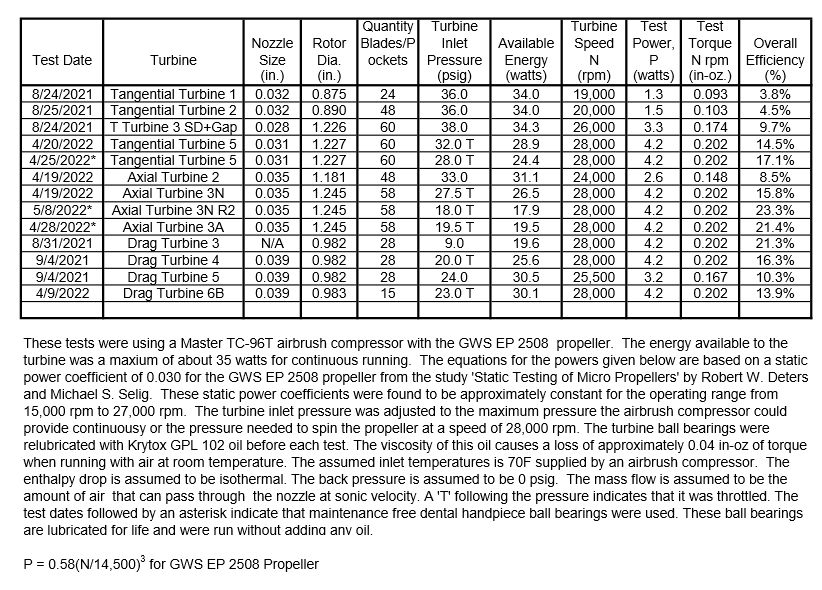
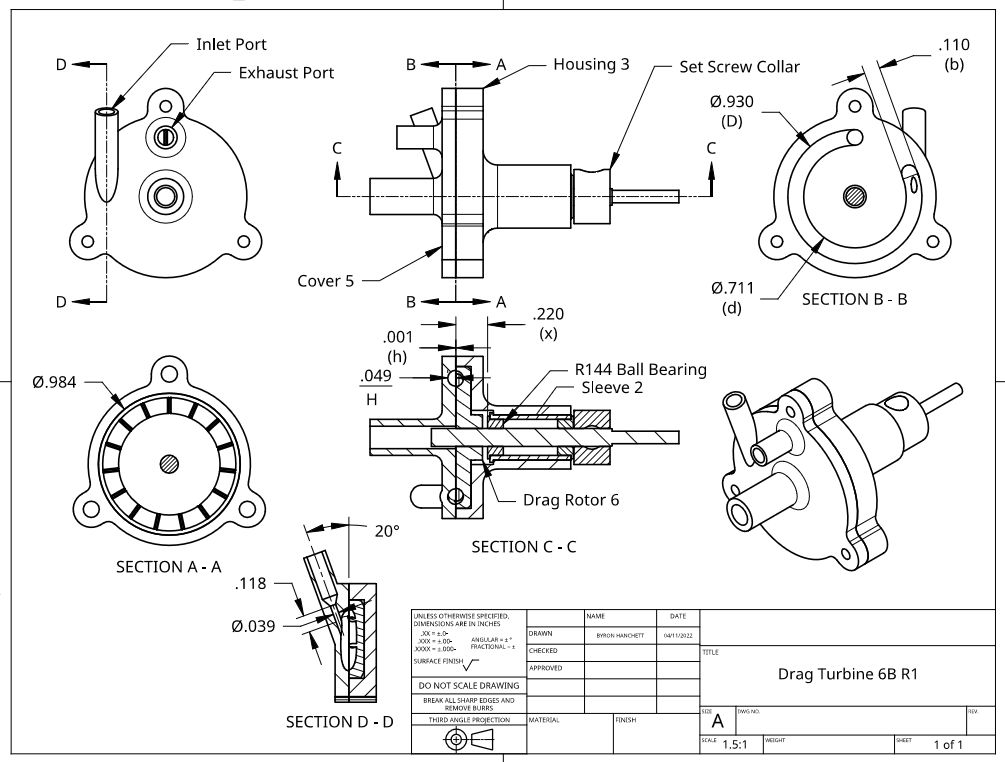
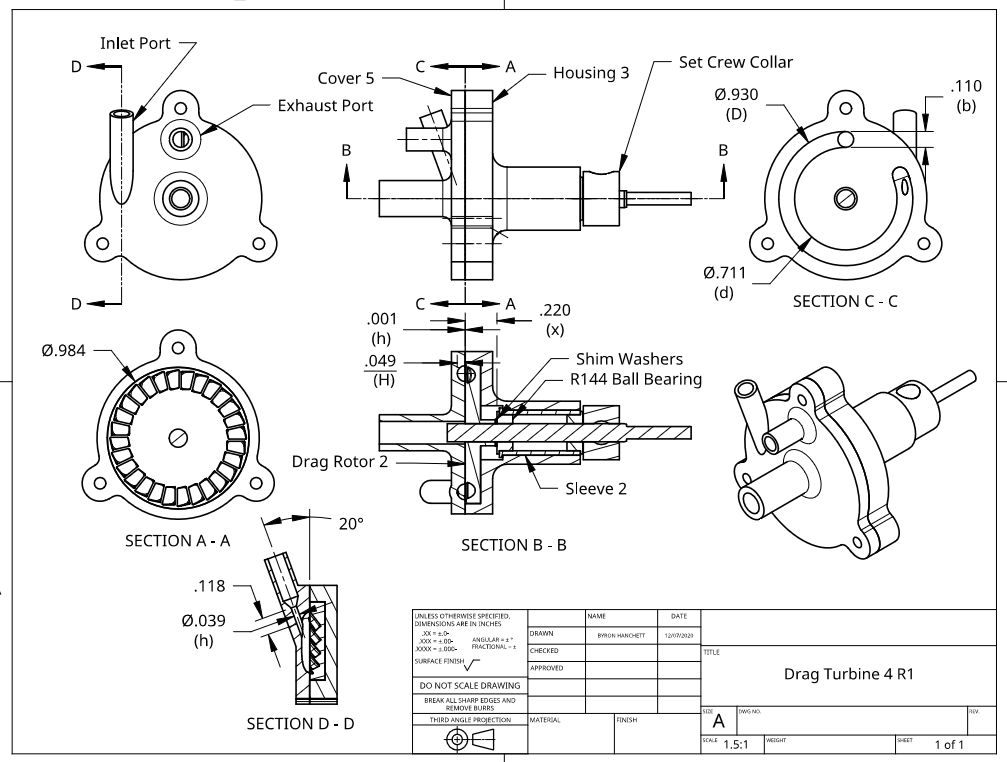


 . With the exhaust open, the force tilting the rotor is large enough to open the gap around the inlet and the leakage becomes very large. With the exhaust port blocked, the air must flow around the rotor, so the pressure is about equal on both sides which reduces the loads on the ball bearings and keeps the rotor from tilting enough to cause contact with the cover or housing. Eliminating any contact and reducing the bearing loads appears to add more torque than forcing the air to flow out the small vent hole reduces the torque. I tried running Drag Turbine 6B and had the same results. In the last test of Drag Turbine 6B, the rotor stopped spinning and finally the turbine would not run again with exhaust open or closed. Apparently, the forces on the dental ball bearing are too large with the drag turbines. I added a section view of Drag Turbine 6B showing the location of the vent hole.
. With the exhaust open, the force tilting the rotor is large enough to open the gap around the inlet and the leakage becomes very large. With the exhaust port blocked, the air must flow around the rotor, so the pressure is about equal on both sides which reduces the loads on the ball bearings and keeps the rotor from tilting enough to cause contact with the cover or housing. Eliminating any contact and reducing the bearing loads appears to add more torque than forcing the air to flow out the small vent hole reduces the torque. I tried running Drag Turbine 6B and had the same results. In the last test of Drag Turbine 6B, the rotor stopped spinning and finally the turbine would not run again with exhaust open or closed. Apparently, the forces on the dental ball bearing are too large with the drag turbines. I added a section view of Drag Turbine 6B showing the location of the vent hole.